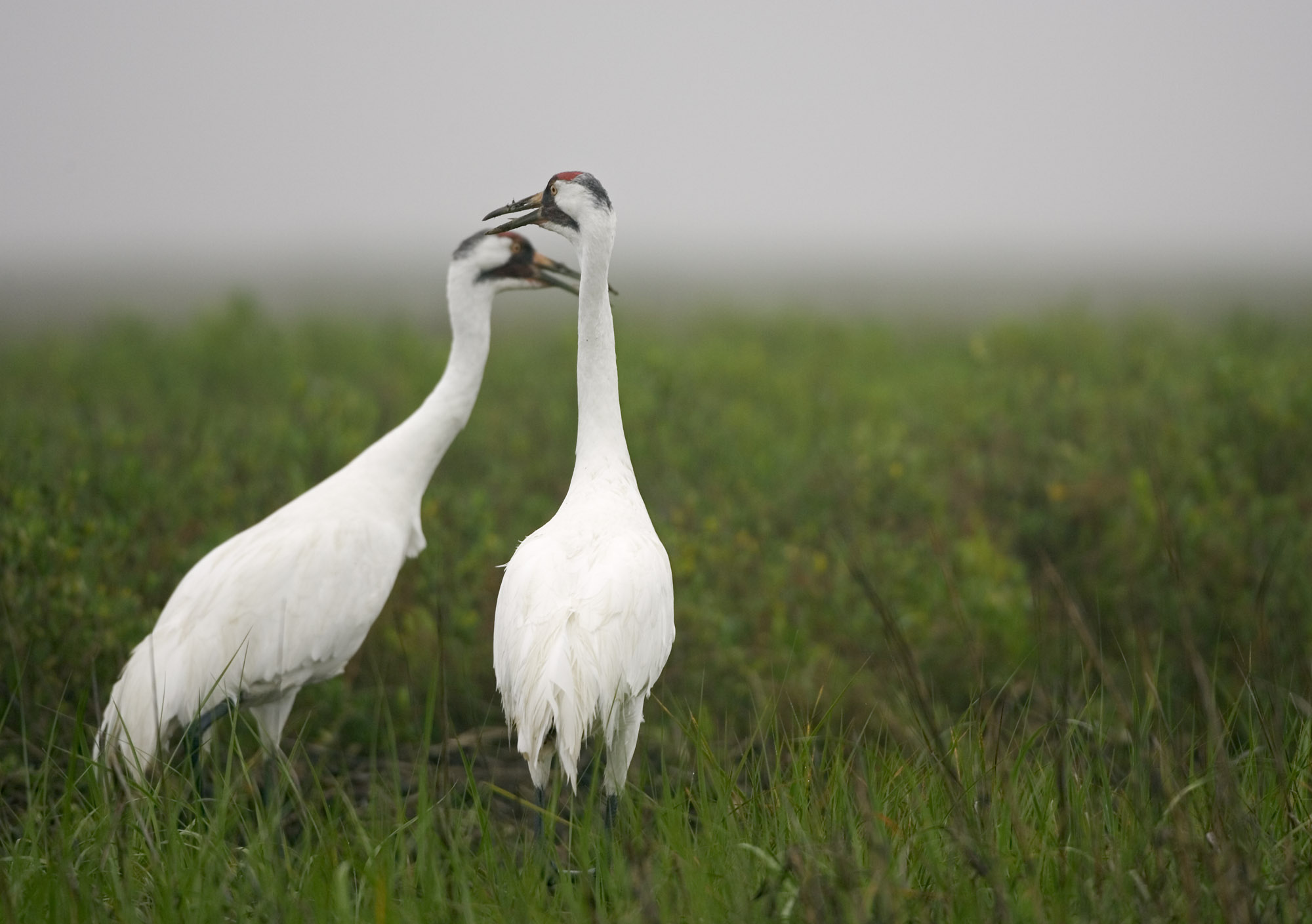Wildlife: Whooper Watch

Whooping Crans, photo by Earl Nottingham
Passport to Texas with support from the Wildlife and Sport Fish Restoration Program
Habitat protection and hunting restrictions (in place since the early 20th Century) saved the last wild migratory flock of whooping cranes from extinction.
06— Our whooping crane population in Texas is getting larger. We’re approaching about 300 birds in that population now.
That’s up from a low of 16 birds. Lee Ann Linam, a biologist in the Wildlife Diversity Program, says last year a few whoopers wintered farther inland than usual. To better understand this event, Texas Parks and Wildlife created a new monitoring program called Whooper Watch.
18–If we have whooping cranes that linger either in migration or in some of these non-traditional wintering areas, then we are training volunteers at workshops to go out and to observe those cranes in a way that’s not disturbing to the cranes, but would let them gather some data for us about the habitats they’re using and their behavior in those habitats.
Anyone can and should report a whooper sighting to Texas Parks and Wildlife, but if you want to go deeper, Lee Ann Linam recommends taking the training.
18– We’re using methods that are used by animal behaviorists – especially those who study cranes around the world. So our volunteers are learning some of the real techniques that biologists use. But anybody who enjoys watching wildlife and is a good observer, can learn from us how to gather this data in a way that is really useful to us.
Find information on Whooper Watch at the Texas Parks and Wildlife website.
The WSFR program supports our series and funds diverse conservation programs throughout Texas.
For Texas parks and Wildlife…I’m Cecilia Nasti.


 Passport to Texas is a
Passport to Texas is a  Passport to Texas is made available by:
Passport to Texas is made available by: